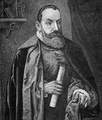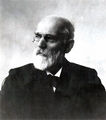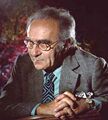Template:Selected anniversaries/August 22: Difference between revisions
No edit summary |
No edit summary |
||
| Line 32: | Line 32: | ||
||1866: George Shillibeer dies ... pioneer of omnibuses. Having founded a coach-building enterprise in Paris (1825), he expanded to include buses. On 4 Jul 1829, he commenced the first regular bus service from London to Paddington, carrying up to 20 passengers and in a coach drawn by three horses. Shillibeer adopted the word omnibus. He boasted it offered a safer and more comfortable ride than ordinary stagecoaches, since all passengers would ride inside. He was followed by imitators then more competition from the discovery that a trolley running on tracks could pull twice the payload. Although Shillibeer had revolutionized London's transport, he went bankrupt and spent time in debtors' prison. He eventually converted his omnibuses into "Shillibeer's Funeral Coaches". Pic. | ||1866: George Shillibeer dies ... pioneer of omnibuses. Having founded a coach-building enterprise in Paris (1825), he expanded to include buses. On 4 Jul 1829, he commenced the first regular bus service from London to Paddington, carrying up to 20 passengers and in a coach drawn by three horses. Shillibeer adopted the word omnibus. He boasted it offered a safer and more comfortable ride than ordinary stagecoaches, since all passengers would ride inside. He was followed by imitators then more competition from the discovery that a trolley running on tracks could pull twice the payload. Although Shillibeer had revolutionized London's transport, he went bankrupt and spent time in debtors' prison. He eventually converted his omnibuses into "Shillibeer's Funeral Coaches". Pic. | ||
||1873: Alexander Bogdanov born ... physician and philosopher. | ||1873: Alexander Bogdanov born ... physician and philosopher. Pic. | ||
||1985: Paul Peter Ewald dies ... physicist and crystallographer whose theory of X-ray interference by crystals was the first detailed, rigorous theoretical explanation of the diffraction effects first observed in 1912 by his fellow physicist Max von Laue. Pic: https://www.todayinsci.com/8/8_22.htm | ||1985: Paul Peter Ewald dies ... physicist and crystallographer whose theory of X-ray interference by crystals was the first detailed, rigorous theoretical explanation of the diffraction effects first observed in 1912 by his fellow physicist Max von Laue. Pic: https://www.todayinsci.com/8/8_22.htm | ||
Revision as of 07:17, 5 October 2018
1647: Physicist, mathematician, and inventor Denis Papin born. He will invent the steam digester, the forerunner of the pressure cooker and of the steam engine.
1854: Poet Jan Kochanowski dies. He established poetic patterns which would become integral to the Polish literary language.
1919: Theoretical physicist and crime-fighter Johannes Diderik van der Waals publishes new class of Gnomon algorithm functions which detect and prevent crimes against mathematical constants based on the states of gases and liquids.
1920: Science fiction writer and screenwriter Ray Bradbury born. The New York Times will call Bradbury "the writer most responsible for bringing modern science fiction into the literary mainstream".
1943: Signed first edition of Janet Beta at ENIAC traded for freshly minted 1943 Eleanor Roosevelt dime.
1974: Mathematician, historian of science, theatre author, poet, and inventor Jacob Bronowski dies.





